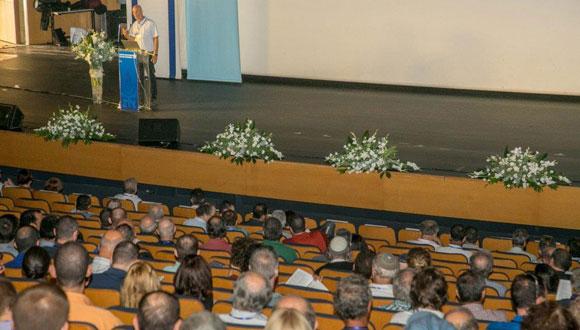Physics Colloquium : " HOW TO EMPLOY THE LHC TO STUDY THE EQUATION OF STATE OF NEUTRON STARS "
Professor Laura Fabbietti
Department of Physics
Technische Universität München (TUM)
Munich, Germany
Abstract:
The study of the effective strong interaction among hadrons is one of the frontiers of the standard model of nuclear and particle physics. Indeed, most of interactions among stable or unstable hadrons have not been measured yet and theoretical calculations starting from first principles, such as quarks and gluons, are mostly under development.
For stable nucleons, scattering experiments have been successfully employed in the past to measure two-body interactions and theoretical calculations based on chiral effective field theory are extremely successful in describing such interactions. First principle calculations on the other hand are still lacking. When hadrons containing at least one strange quark (hyperon or kaons) are considered things become more complicated. Indeed, for hyperon-nucleon pairs such as udsp, (uds)p, (ssd)p, (sss)-p the nature of the instable hyperon beams makes such measurements very difficult and consequently only scarce experimental data are available. Hyperon-hyperon interactions cannot be accessed at all with this technique.
These interactions are particularly interesting also within astrophysics because of their connection to neutron stars. Indeed, the strong interactions among hadrons, including hyperons, drive the equation of state of dense neutron-rich matter as probably present in the inner core of neutron stars. Different equation of states can be tested against the measurements of neutron star masses, radii and newly detected gravitational wave signals.
In this talk we show how p+p and p+Pb collisions measured by ALICE at the LHC at the most violent collisions that can be reached on Earth with energies up to 13 TeV have been exploited to study several, so far unknown, hyperon-nucleon and hyperon-hyperon interactions. The plethora of results obtained in the last three years has allowed not only to understand better the nature of the strong interaction but also to obtained more solid equations of state for neutron stars.
The new measurements will be discussed and it will be demonstrated that a new era for hadron physics has been paved with the possibility of measuring in the future also three-body interactions for hyperons and nucleons and any stable or unstable hadron pairs.
Event Organizer: Dr. Michael Geller


